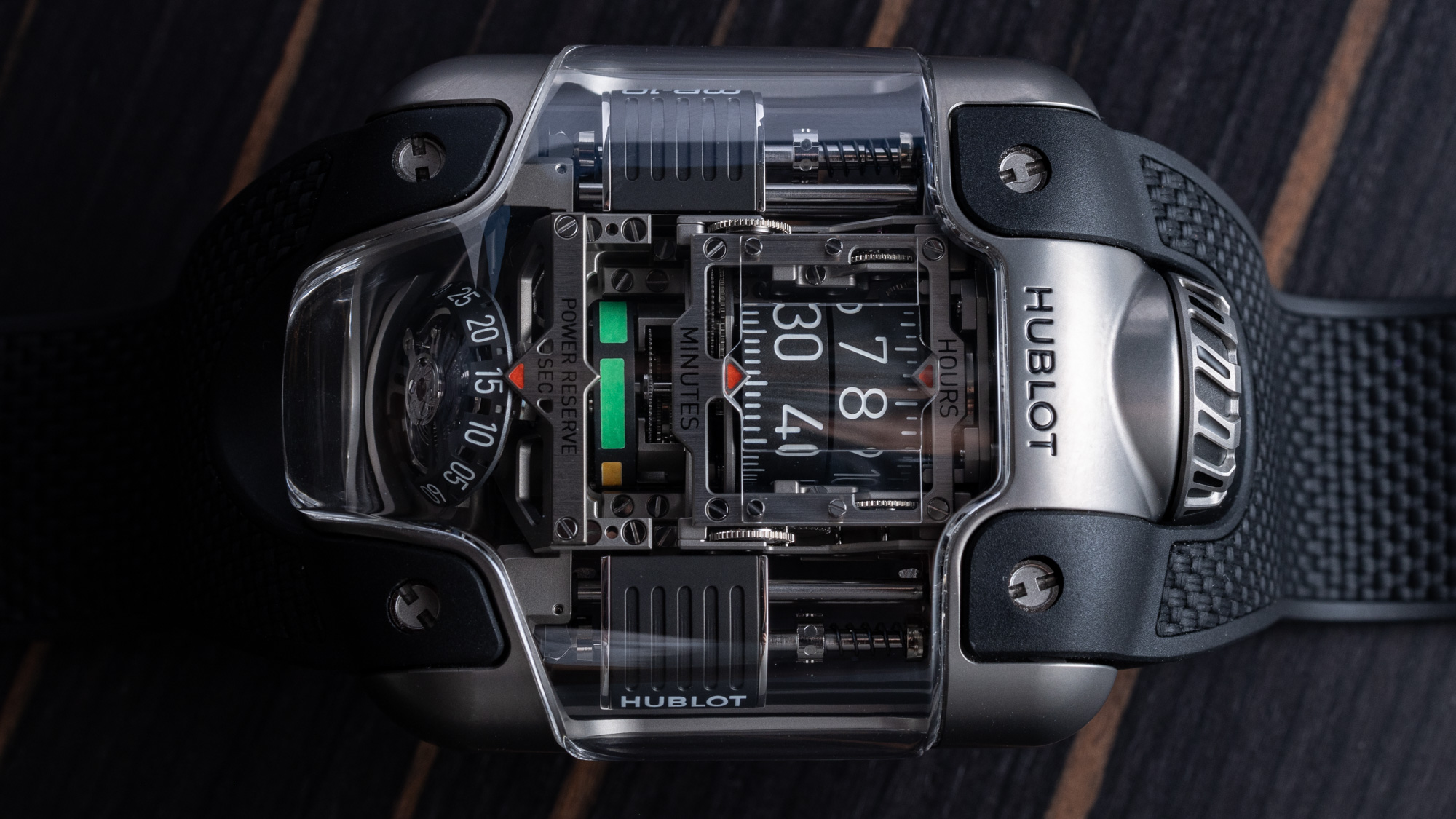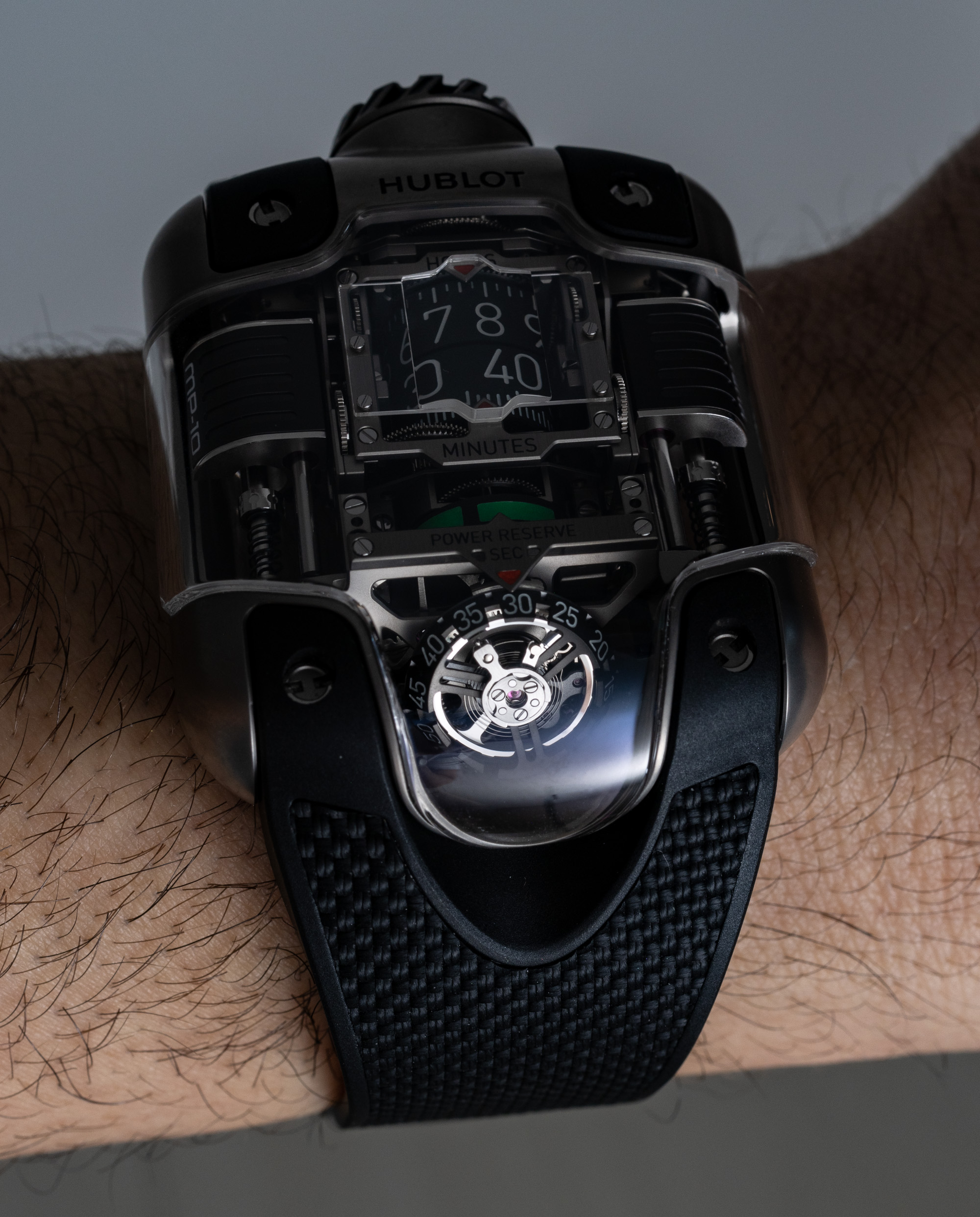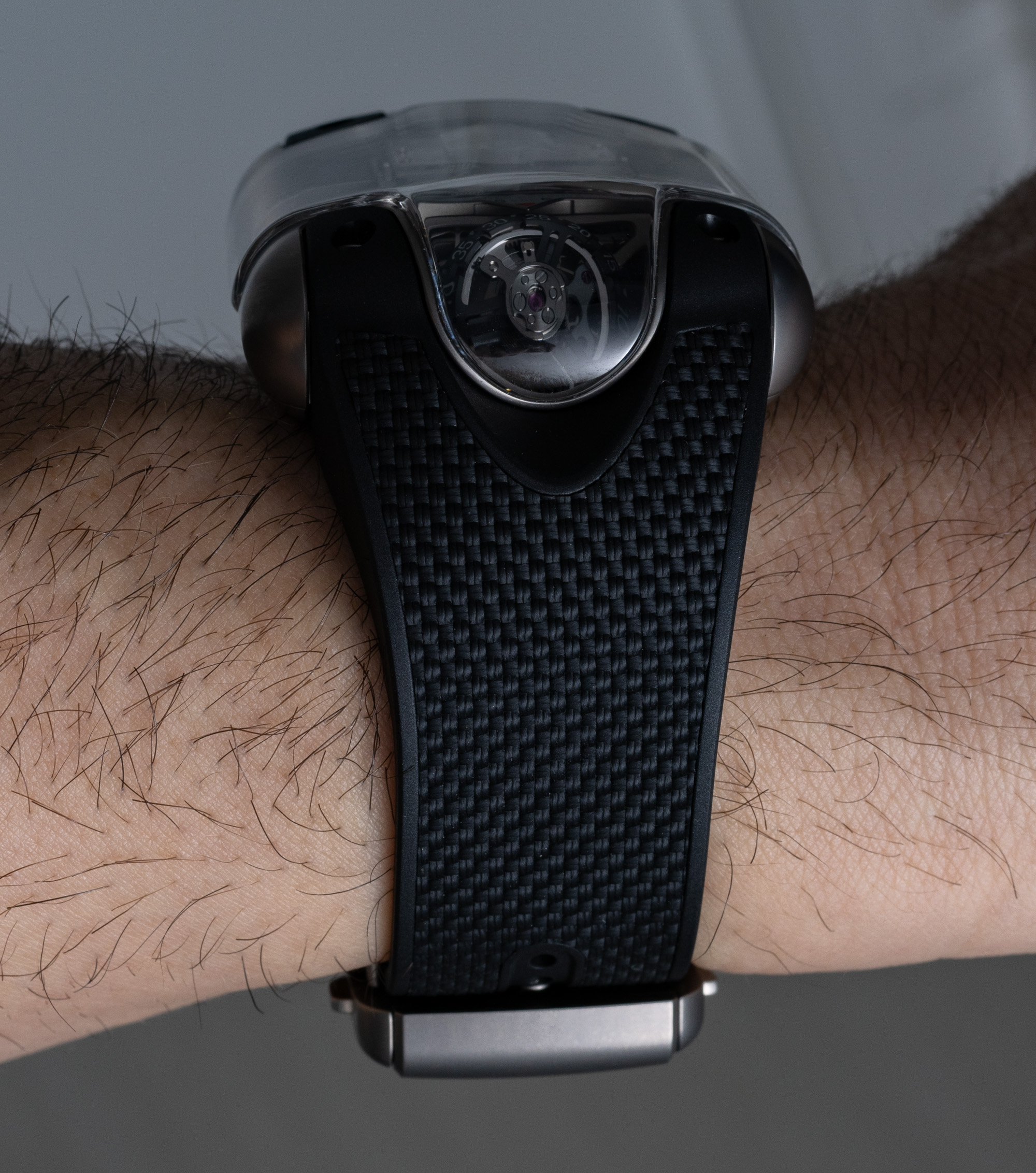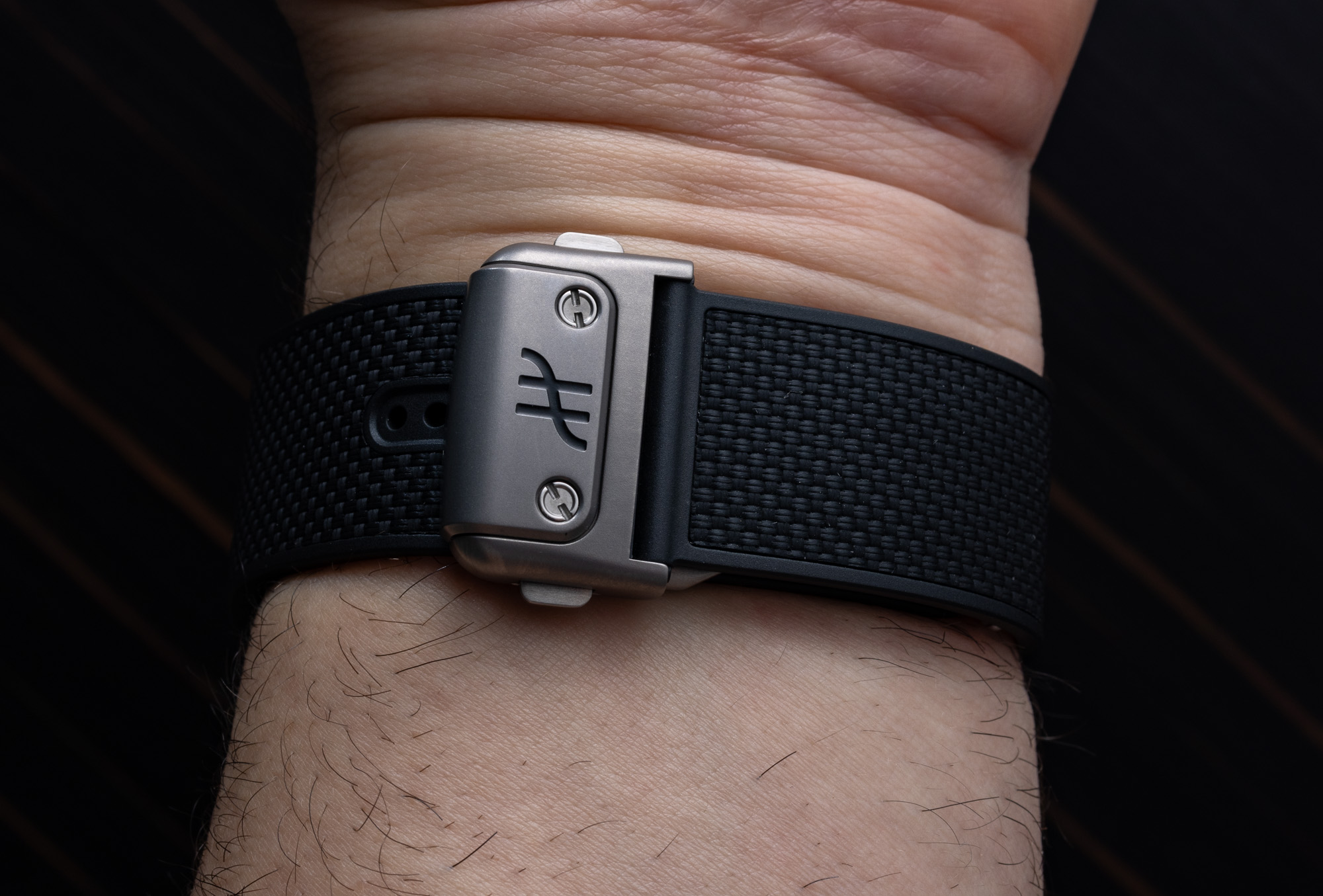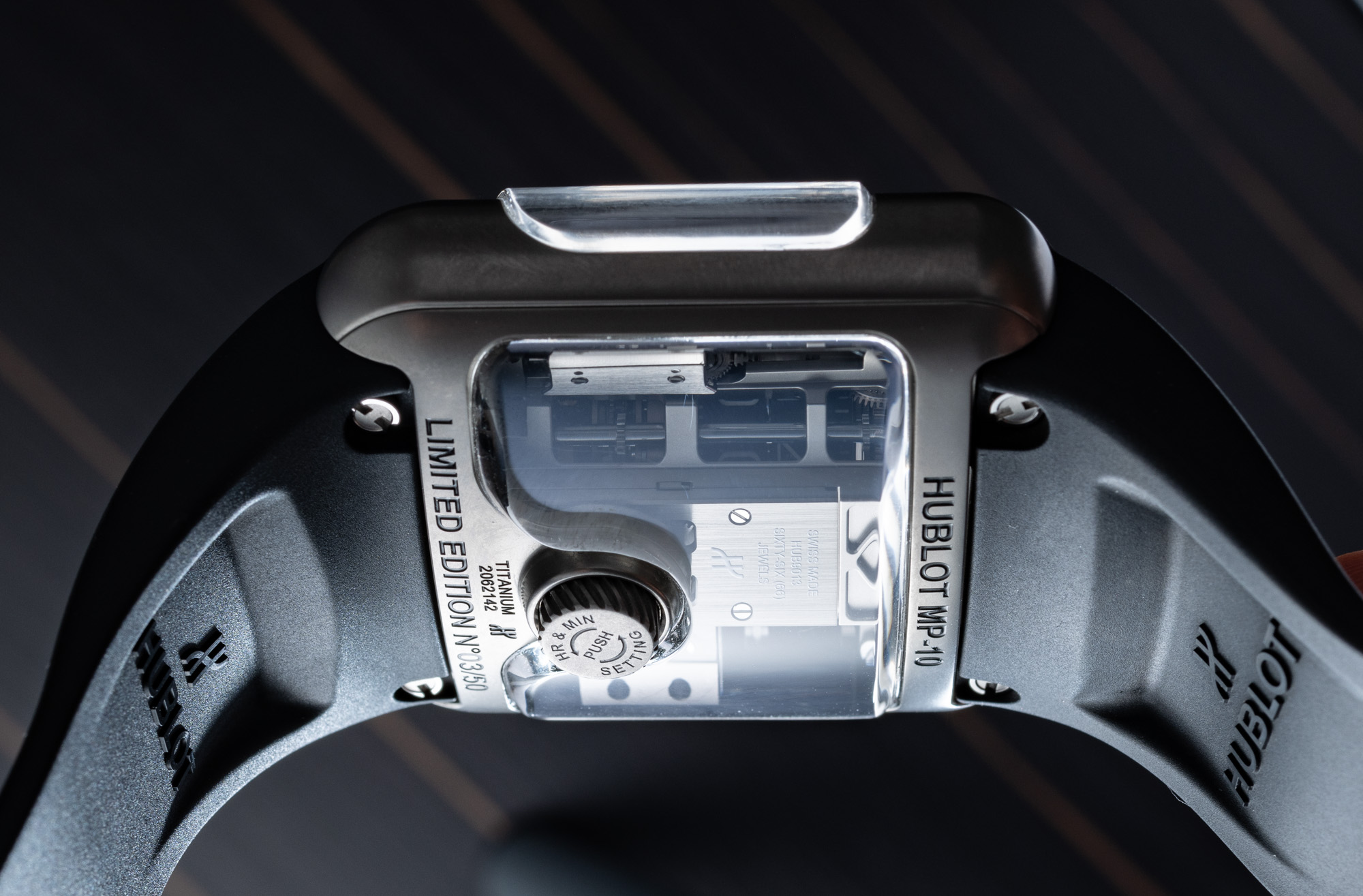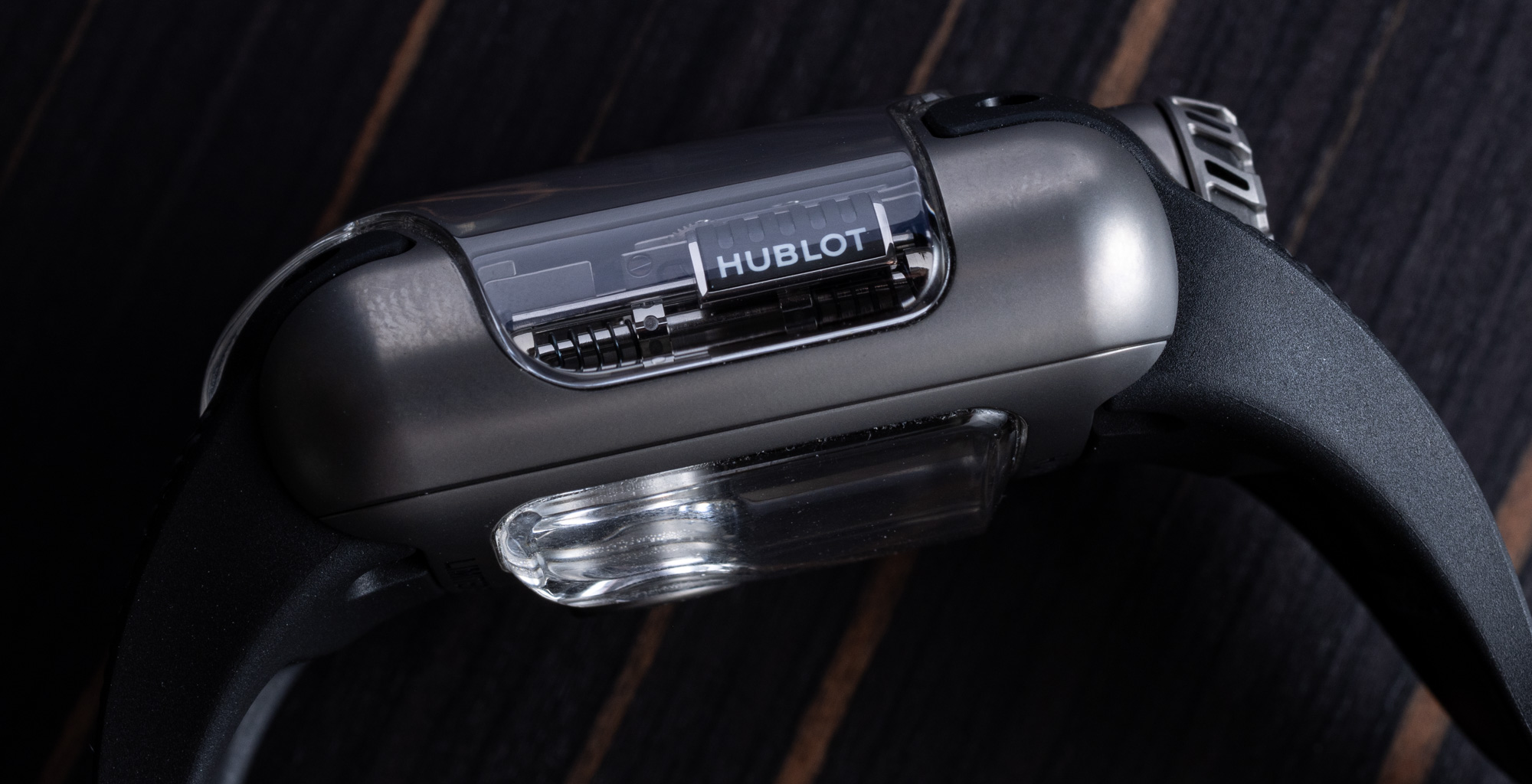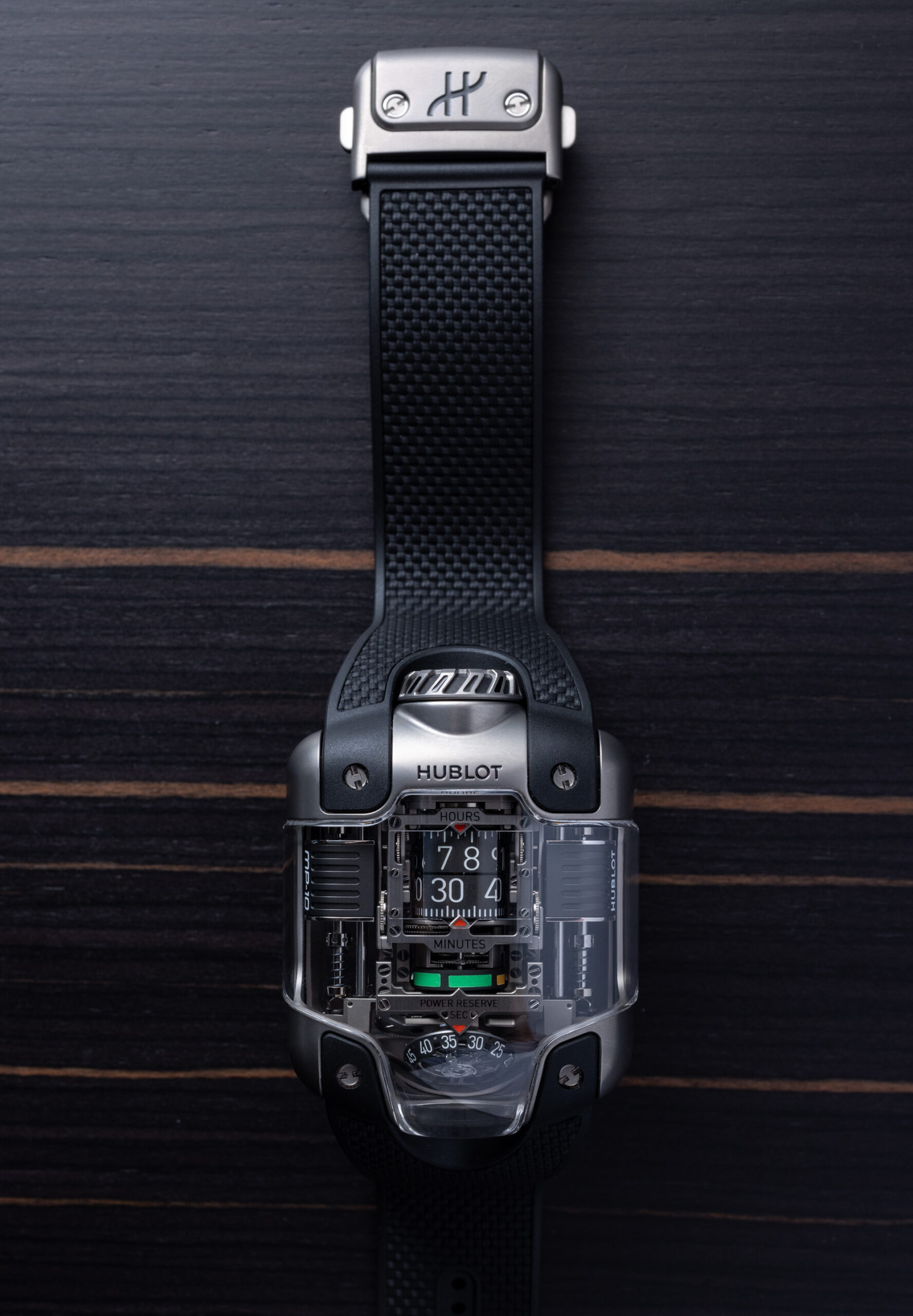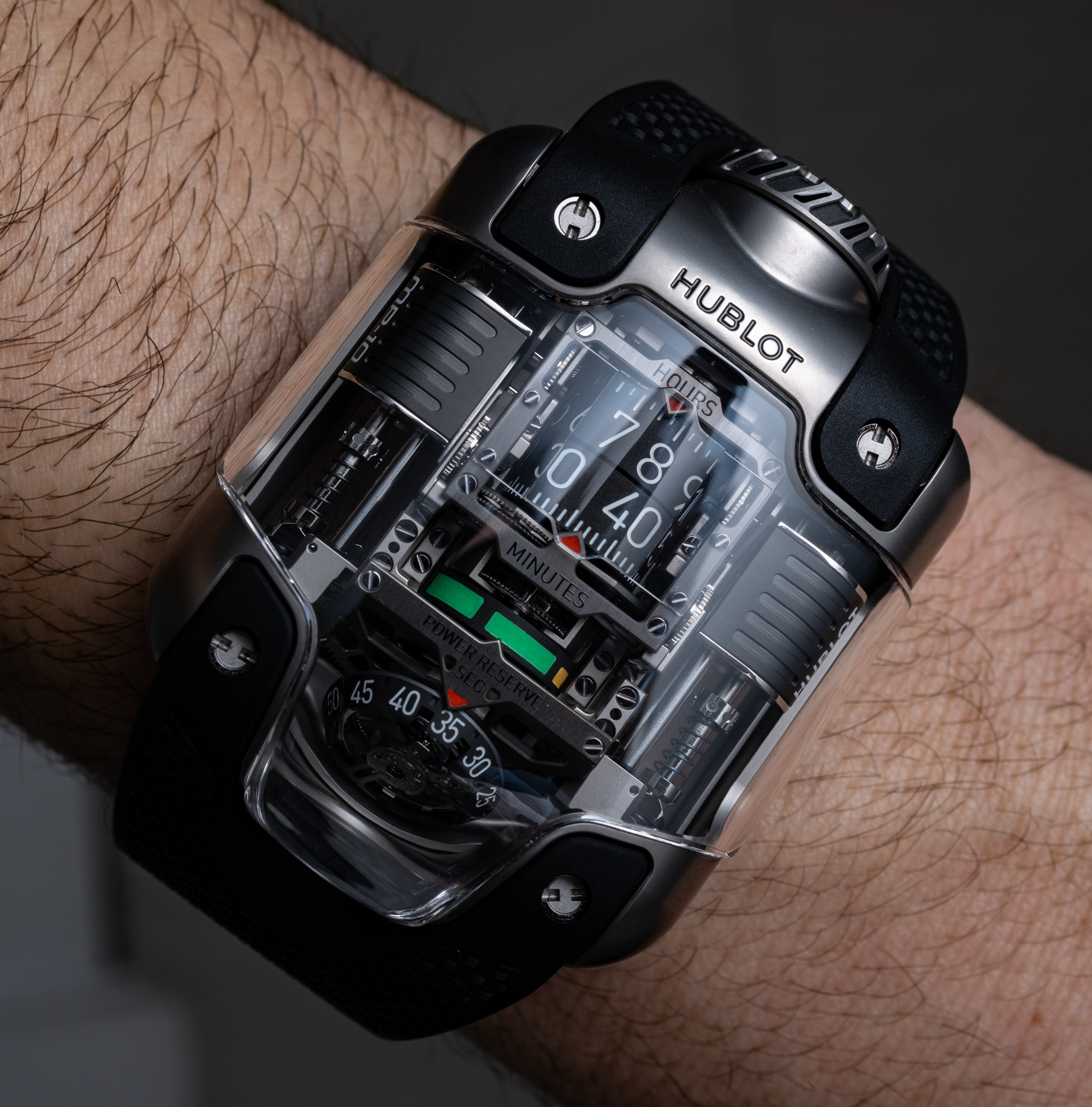
At LVMH Watch Week 2024, Hublot introduced its latest exotic high-luxury watch with the Hublot MP-10 Tourbillon Weight Energy System. This is the latest in a long series of “Masterpiece” (“MP” stands) high-horology products from the brand, which started during Jean-Claude Biver’s ownership. Hublot Masterpiece watches became a playground for Hublot’s engineers to develop limited-production, high-complication timepieces to sit as a jewel on top of the high-end watchmaker’s crown. Today’s Hublot MP watches are meant to remind enthusiasts about Hublot’s in-house movement manufacturing capabilities, as well as to personify the brand’s modern-thinking and edgy design ethos. The Hublot Masterpiece watches are released in order of when they are completed as opposed to in sequential order. Accordingly, the MP-10 actually follows the release of the MP-15 Murakami. For the MP-10, Hublot decided to revisit time indication via moving drums and also to experiment with a novel type of automatic winding technology.
Many people seem to suggest that the Hublot MP-10 is a thematic successor to the Hublot MP-05 LaFerrari, as they both indicate time via moving drums and because of the overall concept of the case architecture. I challenge that, and don’t think Hublot considered the LaFerrari with its 50 days of power reserve and stacked mainspring barrel system when working on the MP-10 Tourbillon Weight Energy System (which has just two days of power reserve). Rather, I posit that the Hublot MP-10 Tourbillon Weight Energy System is the thematic successor to the 2014 TAG Heuer Monaco V4 Tourbillon. Recall, of course, that TAG Heuer and Hublot are both under the umbrella of LVMH. The TAG Heuer Monaco V4 included a more primitive version of the linear weight automatic winding system. By contrast, the Hublot Weight Energy System is a vastly refined mechanical interpretation of the same concept.
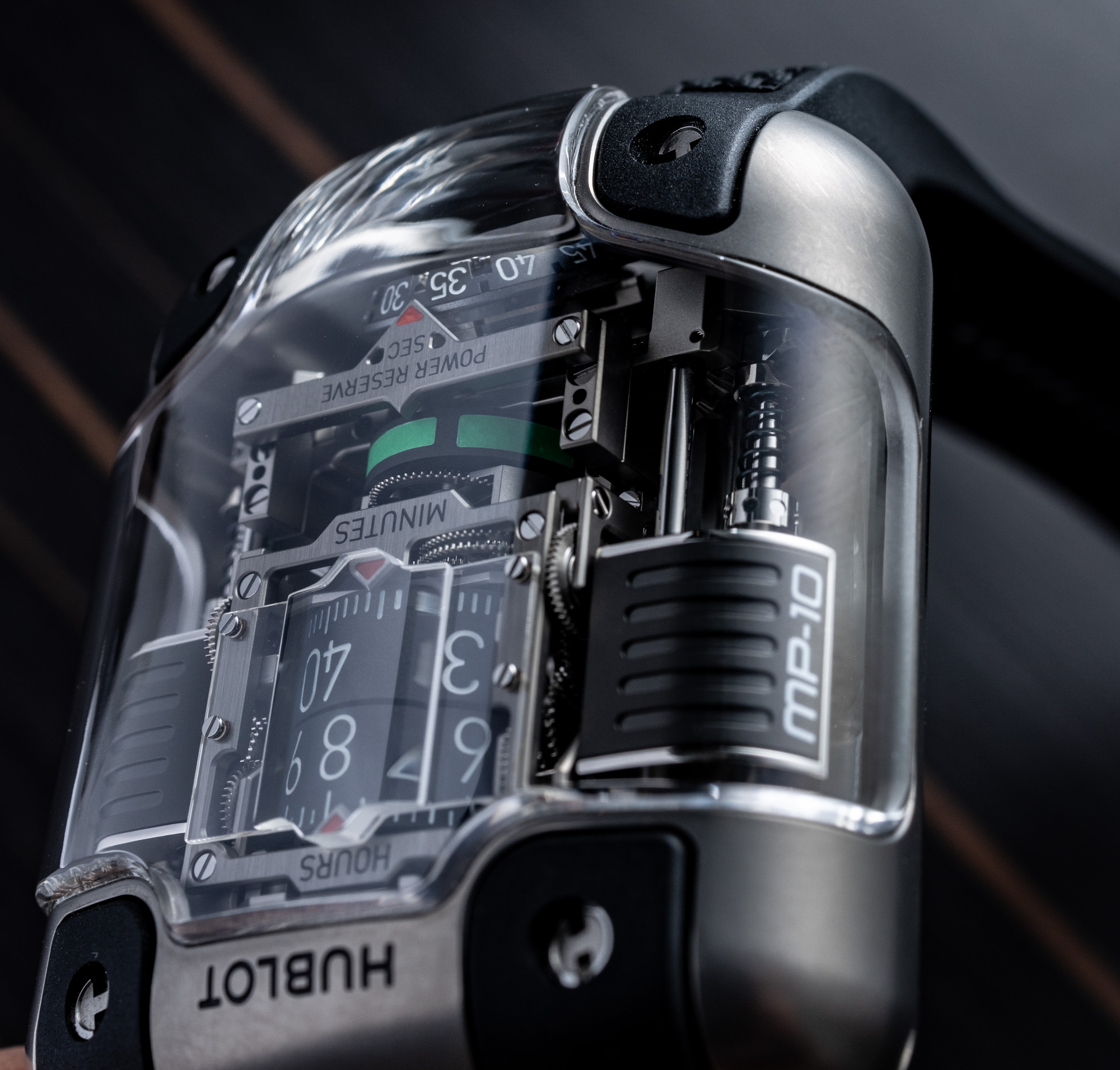
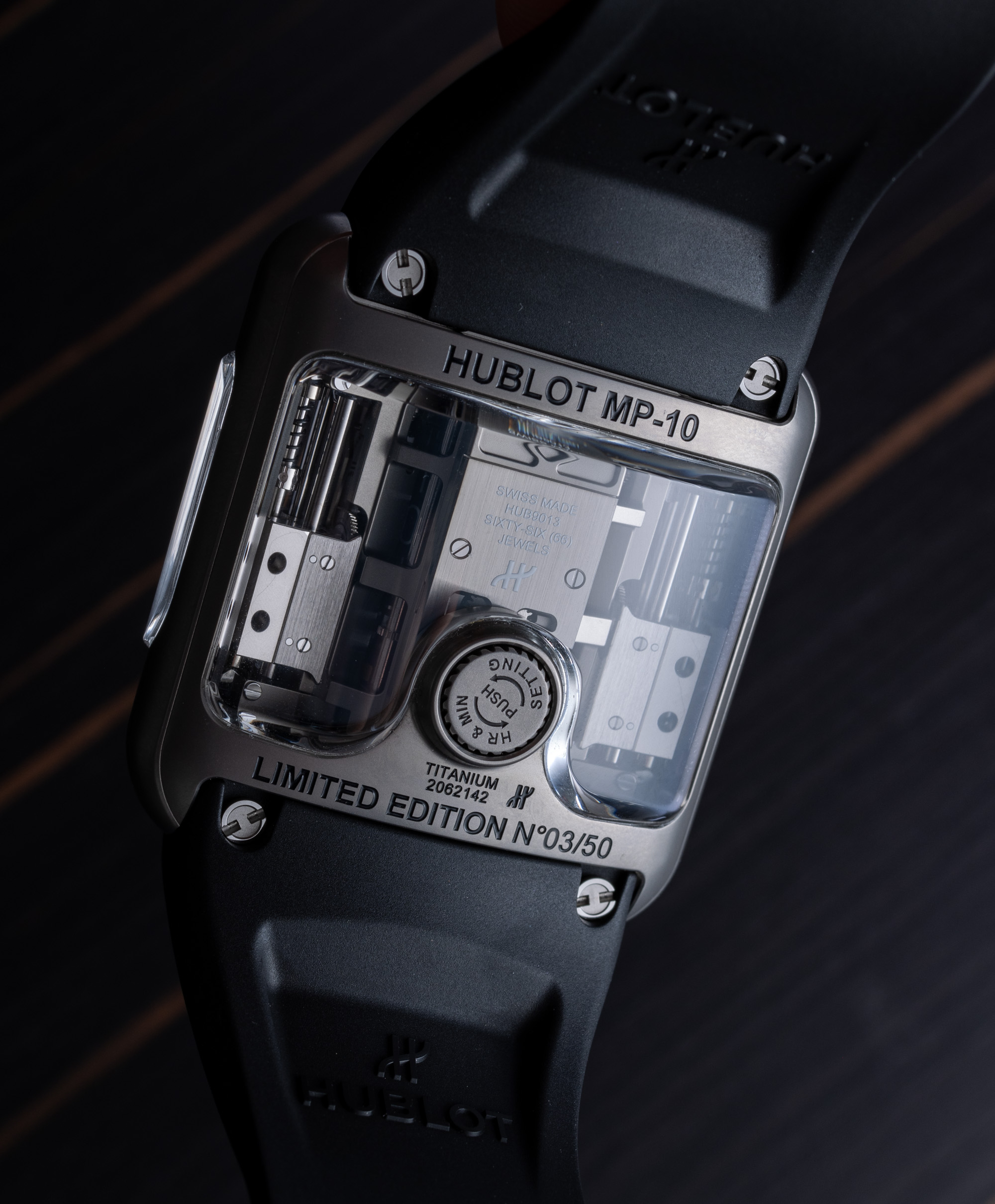
The TAG Heuer Monaco V4 used a solid weight attached to a rail that turned a winding gear as it moved up and down. The problem was that the system incurred a lot of shock because of the constantly shifting weight, and because of the relatively short travel distance of the moving weight. More standard rotational automatic winding systems benefit from the fact that their circular motions mean there is never a stopping point and that the weight can move in a circle forever. Weights that move along a track must stop against something that will incur wear and tear over time with repeated impact. Hublot eventually patented the system inside the new Hublot caliber HUB9013 movement that is responsible for how the winding weights (the “Weight Energy System”) stop at each end of the track/rail. Hublot further developed two weights (not just one as in the Monaco V4) to increase efficiency (i.e., how much power can be generated). With its system of moving the winding weight around, plus the movement that incorporates two of them, Hublot claims that the MP-10 watch is more efficient at energy generation while on the wrist than a traditional rotor-based automatic movement. I found that to be very interesting.
The Hublot HUB 9013 is a lovely movement at the center of this creation. The interesting melding of the movement and case made the MP-10 feel a lot more like an MB&F Horological Machine rather than another Hublot Big Bang with a wild movement on the inside. The movement is made of 592 parts (a considerable amount) and has a tourbillon that is inclined at a 35-degree angle pointed at the lower part of the case. This horizontally mounted tourbillon is something we have seen from Hublot before, but the difference here is the 35-degree tilt, which means that the wearer can more easily view the animation of the tourbillon without having to turn their wrist as much to the side. When paying this sum of money, this attention to cosmetic engineering (another patent is applied on the angled tourbillon) is part of the value you are buying.
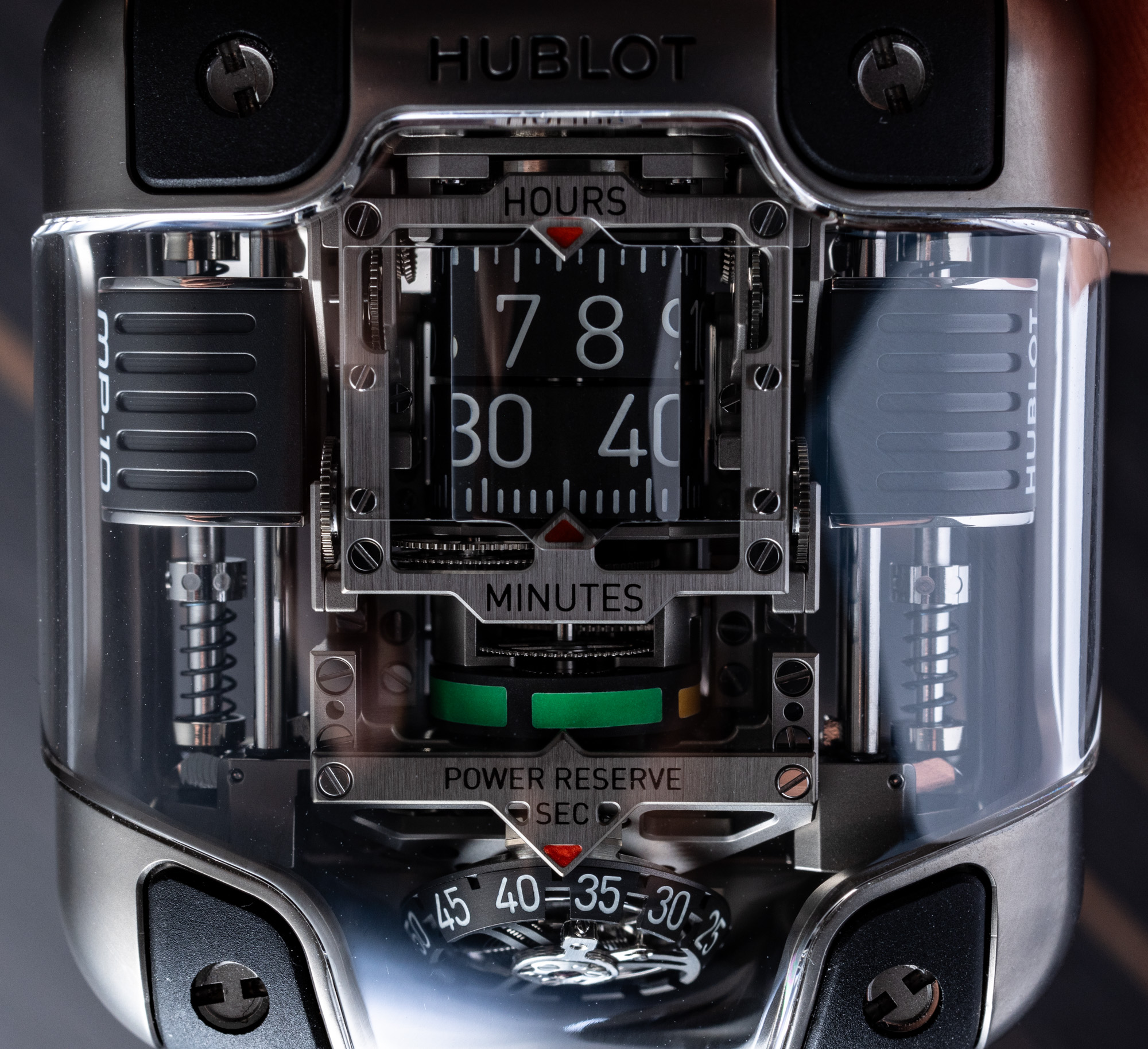
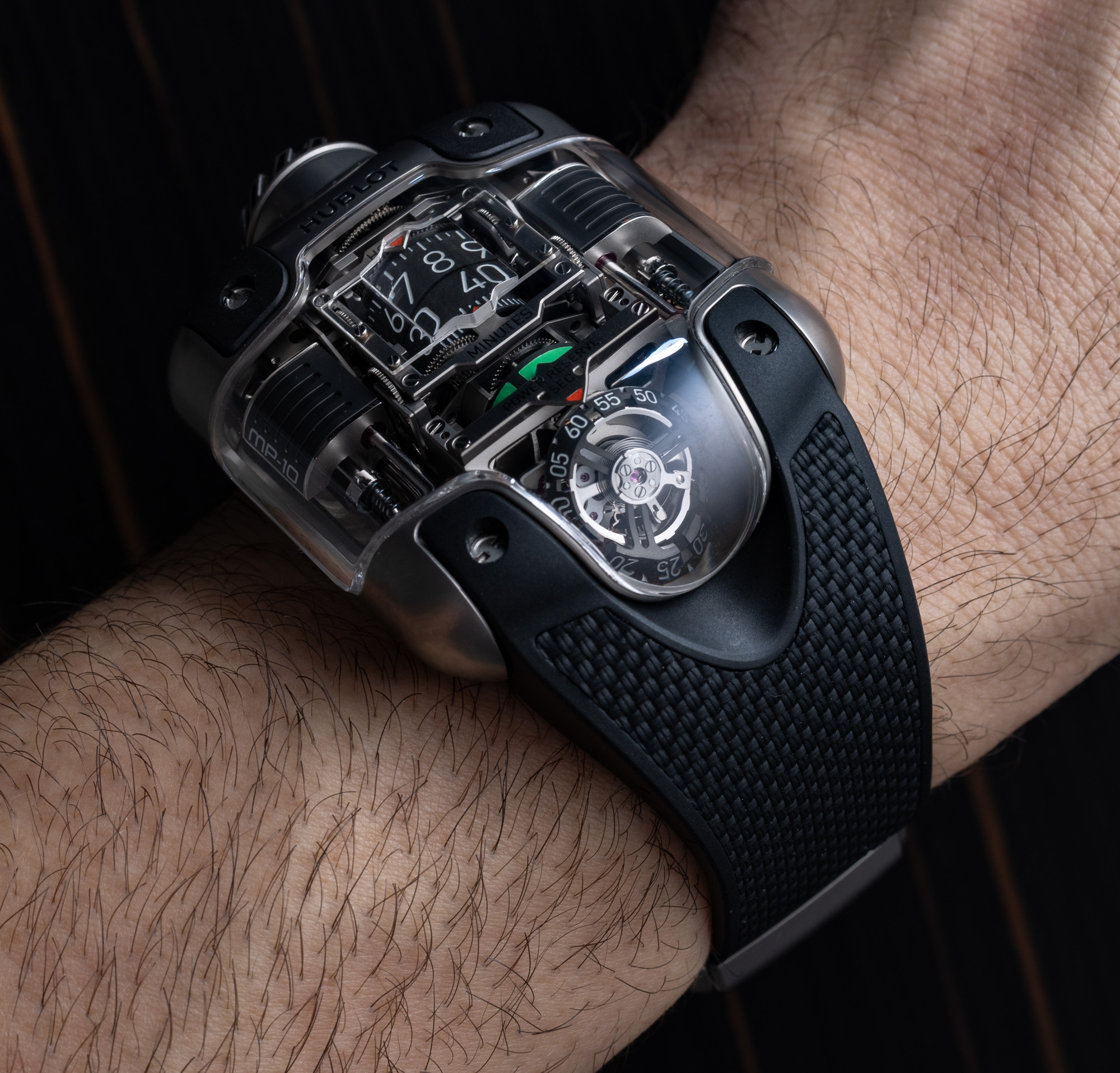
The HUB9013 movement operates at 3Hz with 48 hours of power reserve. Time is indicated via a turning drum for the hours and then one below it for the minutes. This is among the more legible layouts I’ve seen using this indication device. Seconds are indicated via the spinning tourbillon. Underneath the hour and minute drums is a power reserve indicator. The movement has two crowns, and the first is the large crown on the top of the case which is exclusively used for manual winding purposes. The second is a push-out crown on the back of the watch that is used to adjust the time. The movement architecture and operation are truly stunning.
Each side of the HUB9013 has a 22k white gold weight with matte black decoration. I believe that they only wind when moving in one direction, as they move along a set of geared teeth that are connected to the mainspring barrel. Of primary interest to me was how Hublot engineered the shock-absorbing section at each end of the weight. What they did was have the gold weight fall onto a metal “finger” which is hinged like a lever. When the finger section is depressed, the other end of the lever pushes up against a metal coil shock. This is a different orientation than having the weight make direct contact with the metal spring. I’ve only ever seen this orientation before from shock absorbers on certain mountain bikes. When used, this type of shock absorber orientation seems to allow for low travel, but high shock absorption because much of the energy goes into the lever before it hits the coil. None of these parts are particularly suitable for mass production (i.e., I don’t think you’ll find the Weight Energy System as designed here in lower-priced watches), but as a concept, Hublot may have developed the world’s best-performing alternative to the traditional automatic winding system for mechanical watches.
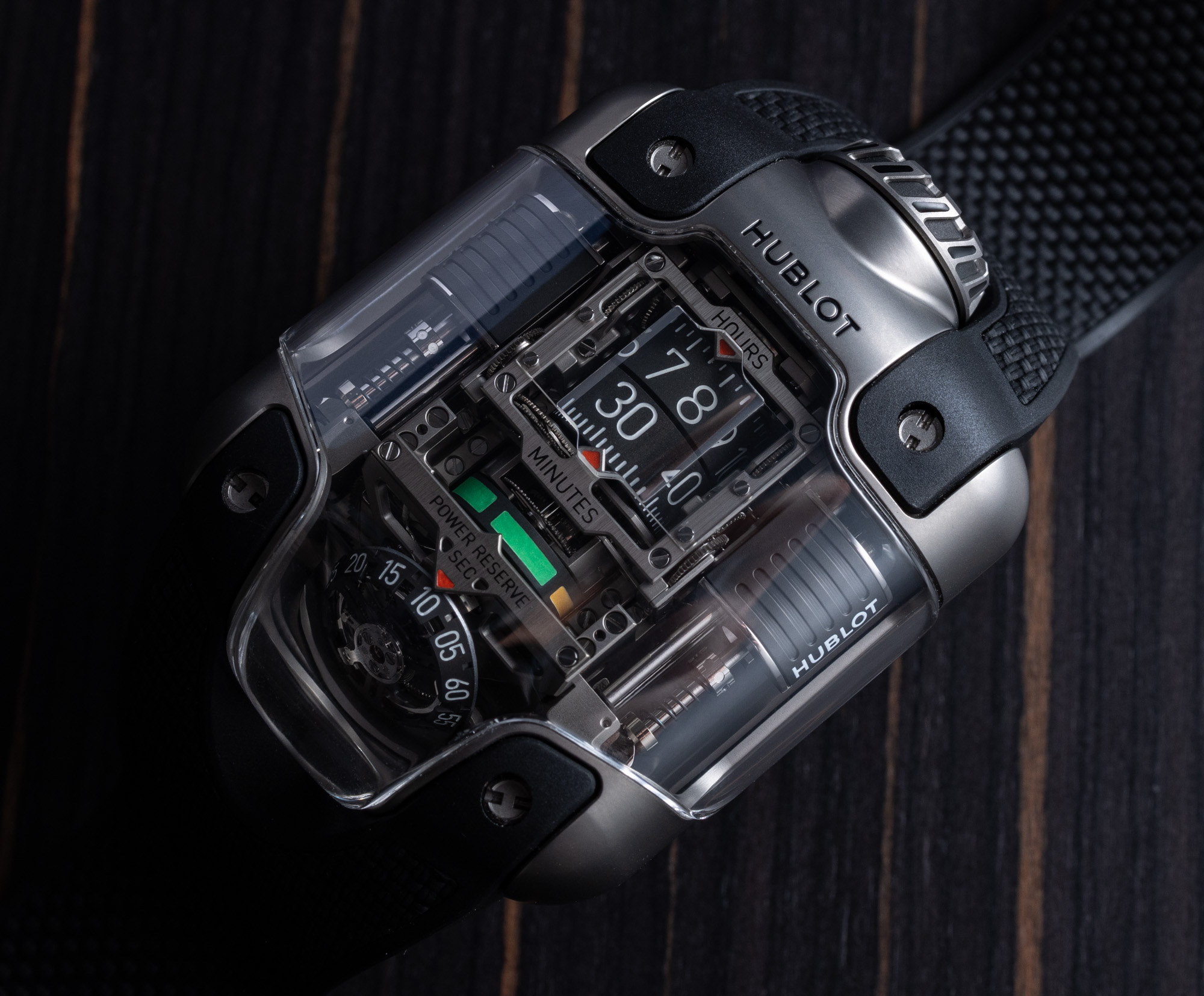
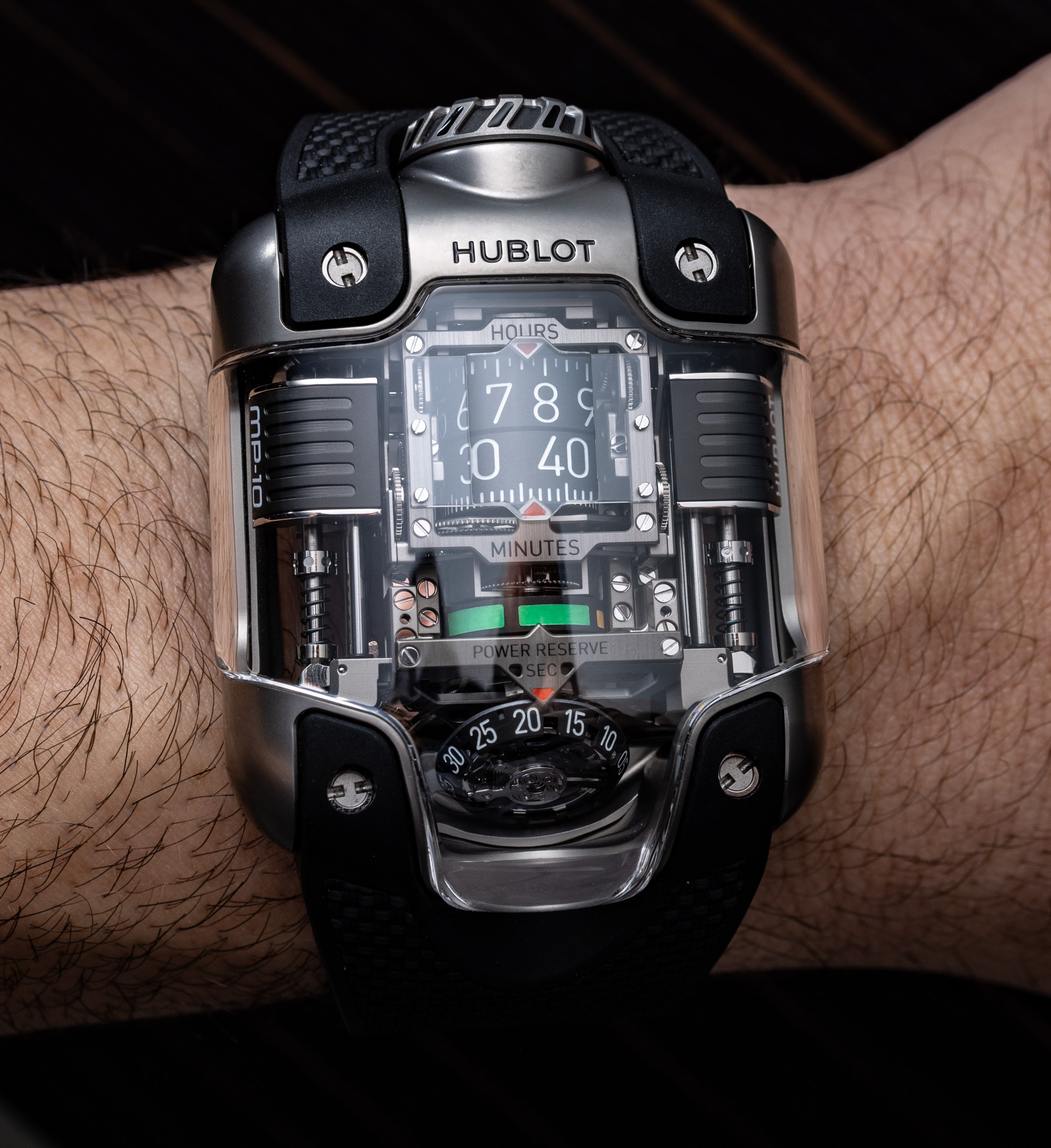
On the wrist, the Hublot MP-10 Tourbillon Weight Energy System watch looks better than in the press images. The elegant rounded curves soften the space-age feel of the overall composition. The MP-10 as seen in this limited edition form has a matte-finished titanium case with a very sophisticated-to-shape sapphire crystal over the dial. The case is 41.5mm wide, 22.4mm thick, and has a 54.1mm long lug-to-lug distance. It is also water resistant to 30 meters and has a bespoke integrated black rubber strap that comfortably wraps around the wrist. This is one of the most inspired and wearable Hublot Masterpiece watches in a while, and I have a feeling that beyond this limited edition of 50 pieces in titanium, Hublot might release the MP-10 Tourbillon Weight Energy System in other materials. Price for the reference 910.NX.0001.RX Hublot MP-10 Tourbillon Weight Energy System Titanium watch is 250,000 Swiss Francs. Learn more at the Hublot website.

